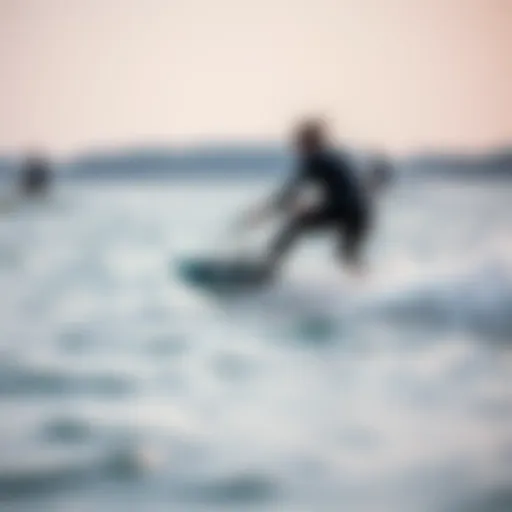Understanding Kitesurfing Gear Costs for Every Level
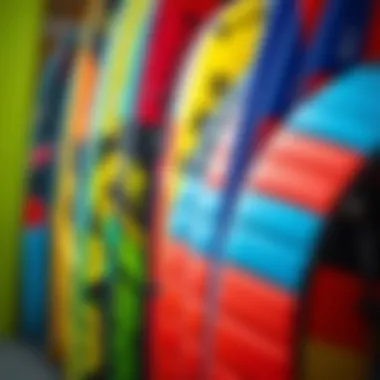
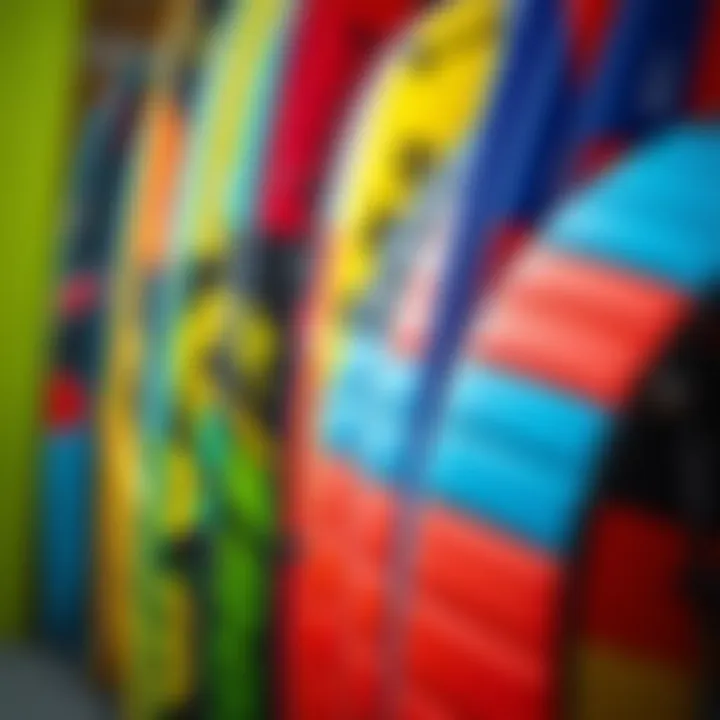
Intro
Kitesurfing is more than just a sport; it’s a lifestyle embraced by water sports enthusiasts from all corners of the globe. As vibrant as the ocean is, navigating its waves with a kite can be both exhilarating and intimidating. However, before you can truly enjoy the ride, it's crucial to consider the financial aspects involved in kitesurfing gear.
Investing in quality kitesurfing gear is essential, and it often feels like you’re diving headfirst into a sea of options—some dazzling, some tantalizingly overpriced. With kites, boards, harnesses, and all those nifty accessories to juggle, navigating the expenditures can be quite a challenge. It’s not merely about purchasing; it’s about making informed decisions that strike a balance between quality and budget.
In this article, we’ll break down the costs associated with kitesurfing gear in a way that’s straightforward and easy to digest. You’ll not only uncover what you can expect to spend as you dip your toes into this dynamic sport but also gain insights into the elements that influence these price tags. With a keen understanding of new and used opportunities, combined with practical advice on making wise purchases, you’ll be better equipped to gear up for the water, without the dread of financial regret looming over you.
Prolusion to Kitesurfing Gear Costs
When it comes to kitesurfing, understanding the costs associated with gear is not just beneficial—it's crucial. For newcomers, diving headfirst into the world of kitesurfing without grasping the financial aspects can lead to regret down the line. Quality gear often makes the difference between a smooth sailing experience and a frustrating challenge. Therefore, recognizing why each component of kitesurfing gear demands careful consideration is imperative for both beginners and seasoned riders.
The Importance of Quality Equipment
Investing in quality kitesurfing equipment is akin to building a house on a solid foundation. First and foremost, the safety factor cannot be overstated. Poor-quality gear can lead to accidents, which no rider wants to encounter. Those looking to learn the sport or master new tricks should opt for dependable equipment that performs consistently in various conditions.
Moreover, higher-quality gear tends to offer greater durability. Kites, boards, and harnesses subject to heavy use should be able to withstand the elements, particularly saltwater and UV rays. Over time, cheaper equipment will often need to be replaced more frequently, ultimately driving up costs. Consider the long-term financial implications: investing a little more upfront can save you a lot down the line.
Additionally, there is the matter of performance. Well-constructed kites and boards facilitate better control and responsiveness, enabling riders to maximize their abilities. This can make for a much more enjoyable kitesurfing experience, fostering passion and motivation—the kind of adulation that no one could put a price on.
Overview of Costs in Kitesurfing
Now, let’s talk about the nitty-gritty—how much does it all cost? The financial commitment to engaging in kitesurfing can vary widely based on several factors, including the type of gear purchased and brand considerations. For a complete setup that includes a kite, board, harness, and accompanying safety gear, prices can range anywhere from a few hundred to several thousand dollars.
In general, you might find:
- Kites: $500 to $1,500
- Boards: $300 to $1,200
- Harnesses: $100 to $300
- Safety Gear: $100 to $500
Clearly, there's a wide margin of pricing here, and that’s before we even touch on accessories like lines, bags, or specific safety gear. Understanding these figures allows enthusiasts to begin forming a budget that fits their needs. Furthermore, recognizing that prices are subject to changes based on technological advancements, popular trends, or even seasonal sales will also help kitesurfers remain prudent in their choices.
Whether you’re an aspiring kitesurfer eager to dip your toes into the sport or an experienced rider aiming to upgrade your gear, being informed about the associated costs is invaluable. Familiarizing yourself with these aspects not only aids in effective financial planning but also enhances your overall kitesurfing experience.
Kites: Analyzing Pricing and Choices
When it comes to kitesurfing, your kite is sort of like a golfer's club or a chef’s knife—it's not just about getting any old one; you need the right one that fits your style and skill level. Depending on the type of riding you enjoy—whether it’s freestyle, wave riding, or simply cruising on flat waters—the kite you choose will significantly influence your overall experience on the water. This section delves into the pricing and selection of kites, presenting the key elements that every kiteboarder should consider.
Types of Kites and Their Costs
Kitesurfing gear is not a one-size-fits-all scenario. There are several types of kites that cater to different riding styles, each coming with its own price tags:
- C-kites: These are the traditional kites known for their heavy pull and high performance in freestyle. Prices range from $700 to $1200 depending on brand and features.
- Bow kites: More versatile and stable in a range of conditions, bow kites are a popular choice for beginners. Expect to pay anywhere from $800 to $1500.
- Delta kites: These are known for their ease of use and ability to perform well in light winds. Prices typically range from $600 to $1300.
- Foil kites: Generally used for specific disciplines like snowkiting or landboarding, foil kites range from $400 to $900 in price, making them a budget-friendly choice.
Understanding these options helps enthusiasts make informed recommendations based on their skill level and riding preferences.
Factors Affecting Kite Price
The price of kites can swing wildly based on various factors. Here we will examine some crucial elements that influence these costs.
Brand Reputation
Brand reputation plays a big role in the pricing of kites. Established companies like North Kiteboarding or Cabrinha tend to charge more because of their consistent quality and reliability.
- A well-known brand often signifies quality materials and advanced technology, which can enhance your experience.
- However, less known brands might offer similar performance at a lower price; this could be a consideration for budget-conscious buyers.
In short, while a reputable brand might charge a premium, you often get that peace of mind knowing your gear is proven and tested.
Materials Used
The materials that go into making a kite dictate both its durability and performance. Generally, high-quality fabric like Ripstop Nylon or Dacron is favored:
- These materials resist wear and provide adequate tension to maintain shape and performance over time.
- On the flip side, while using top-grade materials usually ups the cost, cheaper materials can mean you’re looking at a shorter lifespan and less reliability, particularly in gusty conditions.


Investing in better materials can pay off in the long run when you consider replacement costs and the number of rides you’ll get.
Technological Advancements
Lastly, innovations in kite design can also drive costs up. New technologies such as improved control systems, safety mechanisms, and better design techniques cater to the demands of modern kiteboarders:
- Kites engineered with leading technologies like Inflatable strut design or smart materials often come at a higher initial cost.
- However, these advancements can provide better performance and safety features, ultimately making them a wise investment for serious riders.
While it may sting to spend more upfront, consider it a wise investment when you think about the experience you can have with a kite that responds precisely to your commands.
"When it comes to kitesurfing, the kite is your partner; choose wisely and you'll ride the winds like a pro."
By taking these factors into account, prospective kitesurfers can better navigate the sometimes murky waters of gear selection, ensuring they find a kite that suits their performance needs and aligns with their budget.
Boards: Selecting the Right Model
When venturing into kitesurfing, the choice of board often feels like picking a mate for a dance. Your board is not just equipment; it’s a vital extension of your ability to maneuver through the water. Selecting the right model means understanding what aligns with your skill level, riding style, and the specific conditions you’ll face. Let’s dive into the world of boards, critical elements to consider, and how they can make or break your time on the water.
Different Styles of Boards
Kitesurfing boards are diverse and each style comes with its own feel and functionality. There are several primary types, each designed to cater to various preferences and abilities:
- Twin-Tip Boards: These boards are like a trusty old friend, versatile and accommodating, allowing for smooth riding in both directions. Perfect for beginners who are learning the ropes, they provide stability and are easy to get the hang of.
- Directionals: More akin to traditional surfing, these boards are designed to ride in one direction. They are generally favored by more experienced riders who enjoy carving through waves and making the most of ocean swells.
- Foil Boards: A different kettle of fish entirely, foil boards use a hydrofoil to lift above the water surface, creating a surprisingly smooth ride. They require a bit of skill and know-how, making them best suited for intermediate to advanced kiteboarders.
When selecting a board style, think about the condition of the waters you frequent. For choppy or rough waters, a broader board might keep you more stable, whereas in calmer settings, you might prefer something slimmer for performance and speed.
Price Range for Kitesurfing Boards
The price of kitesurfing boards can vary widely, much like a box of chocolates—you never know what you’re gonna get. On the lower end, entry-level boards typically range from $300 to $600. This tier often includes simpler designs and materials that suffice for beginners finding their sea legs.
As you move into mid-range boards, usually between $600 and $1,200, you begin to see improvements in materials and performance. These boards tend to be more durable and can accommodate a wider range of riding styles, ideal for those who have some experience.
High-end boards can skyrocket to over $1,200. The cost often arises from advanced constructions and features, like lighter materials and specialized shapes that enhance performance in specific conditions.
Important Consideration: Keep in mind that investing in a good board will pay off over time. A quality board can enhance your learning curve, providing more enjoyable and efficient rides, saving you from sinking too much cash into multiple boards that don't fit your needs.
When budgeting for your new kitesurfing board, it’s wise to consider the long-term benefits of investing in a board that suits your style and development needs. Look for sales or secondhand options from reputable sources to get the best bang for your buck while ensuring safety and quality.
Whether you’re a newcomer excited to make waves or a seasoned pro fine-tuning your gear, the effort you put into selecting your board will translate into countless enjoyable hours on the water.
Harnesses: Essential Gear and Costs
In kitesurfing, harnesses play a crucial role that is often overlooked by beginners. This key piece of equipment not only provides support and comfort but also enhances your overall experience on the water. Without the right harness, you might find yourself struggling against the pull of the kite, which can lead to fatigue and frustration. Let's delve deeper into why choosing the right harness is essential.
Harnesses connect the kitesurfer to the kite’s lines through a loop, allowing the rider to transfer the kite’s power without relying solely on their arms. This connection frees up your hands for maneuvers, offering a streamlined experience. As you advance in the sport, having the proper harness can significantly influence performance. In essence, investing in a quality harness is not just about comfort; it is about elevating your kitesurfing skills.
Types of Harnesses for Kitesurfing
Kitesurfing harnesses can be broadly categorized into two main types: seat harnesses and waist harnesses. Each of these types has its unique attributes and caters to different styles of riding.
- Seat Harnesses: These are worn lower down on your body. They sit around your hips and often come down to your thighs. This style provides excellent back support, making them a popular choice for beginners and those who prefer a more secure fit.
- Waist Harnesses: As the name suggests, these sit at the waist and offer more freedom of movement, allowing for better tricks and turns in the air. They are commonly favored by more experienced kitesurfers who want a greater range of motion.
Cost Comparisons of Harnesses
When we look at the price of harnesses, it’s essential to understand the range and what can impact that pricing significantly.
Seat Harnesses
Seat harnesses generally fall into the mid-range price category, with decent options starting around $100 but can easily go up to $300 for high-end models. A significant advantage of seat harnesses is the support they offer. They’re ideal for those who may struggle with back pain, providing an excellent distribution of force.
A noteworthy feature of seat harnesses is the padded leg straps, which ensure a secure fit without pinching. This comfort is especially beneficial for long kitesurfing sessions. One downside, however, is that they may feel bulky during intense maneuvers, which is something to consider when choosing this type.
Waist Harnesses
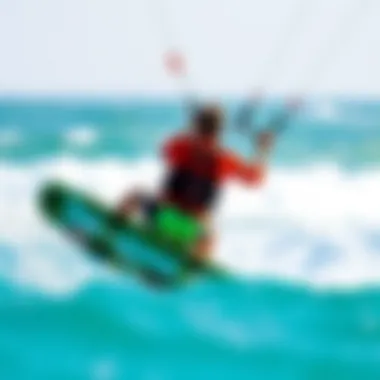
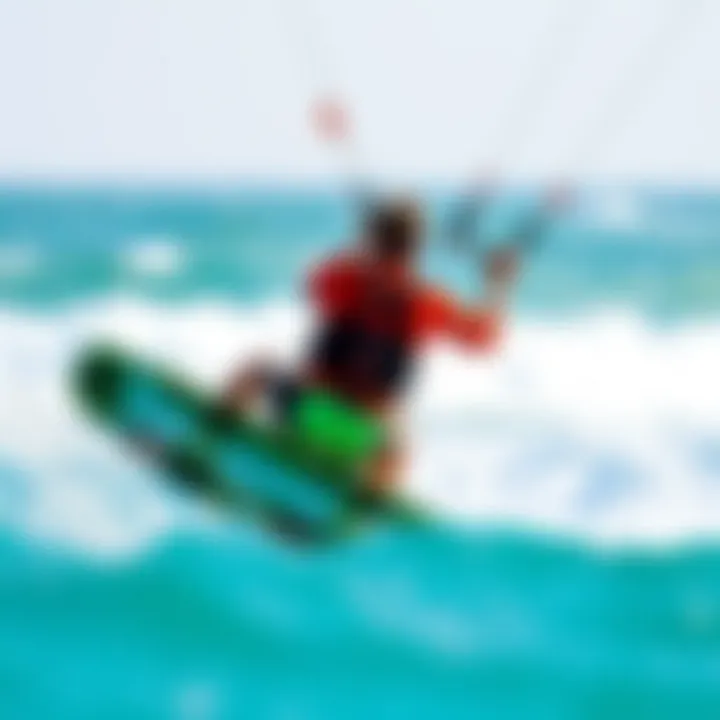
On the other hand, waist harnesses typically range from $80 to $400 depending on the brand and features. They are lighter, allowing a greater range of motion which can be pivotal for performing jumps and tricks. A standout feature of waist harnesses is their waist handle, which many riders find helpful when performing jumps. However, they can sometimes cause ride-up if not properly fitted, which can be uncomfortable.
As you decide on a harness, it’s advisable to test them in person whenever possible. This hands-on approach provides insight into how each type feels when attached to your kite, ensuring it meets your specific needs.
"Investing in the right harness is not just a matter of price but of giving yourself the comfort and control to excel in kitesurfing."
For more detailed information on kitesurfing gear, you can explore websites like Wikipedia or communities on Reddit. The knowledge shared there can give beginners and pros alike a broader perspective on gear choices.
Safety Gear: The Additional Investment
When it comes to kitesurfing, many are quick to purchase a kite or a board, but safety gear deserves a spot at the top of the shopping list. Skimping on safety equipment can lead to dire consequences on the water. Kitesurfing is thrilling, yes, but it holds inherent risks. Therefore, investing in quality safety gear isn’t just a wise choice; it’s essential for ensuring a safe and enjoyable experience.
Importance of Safety Equipment
Safety equipment serves as the backbone of a kitesurfer’s arsenal. For instance, helmets protect against head injuries during falls or collisions with equipment. They’re your first line of defense. Beyond helmets, the significance of impact vests and proper harnesses can’t be overlooked. Each piece of safety gear plays a role in providing peace of mind. Imagine taking a leap off a wave without worrying about cracks and bruises, mostly because you know you’re well protected. In context, safety gear elevates the kitesurfing experience, allowing you to push your limits while minimizing risks.
Expected Costs for Safety Gear
When budgeting for kitesurfing, it’s crucial to factor in the expenses associated with safety gear. Depending on the quality and brand, these costs can vary significantly.
Helmets
Helmets are vital for safeguarding the head during high-speed falls or mishaps. They come in different designs, often featuring lightweight materials that offer both comfort and protection. A good helmet can cost anywhere from $50 to $200. Look for those with adjustable straps and breathable designs for prolonged wear.
A standout option often preferred by kitesurfers is the Rider Pro Kitesurf Helmet. With its snug fit and effective ventilation, riders can enjoy comfort along with the peace of mind that comes from solid head protection. However, such benefits do come at a price. It’s worth noting that while cheaper helmets may seem alluring, they might not provide adequate impact resistance.
Impact Vests
Impact vests are crucial for protecting the torso during falls. Unlike buoyancy vests, which are more about flotation, impact vests are designed with padded materials to absorb shock. Their cost typically ranges from $70 to $150, but the extra layer of safety is priceless. These vests often feature strategic padding, ensuring that key areas are shielded without sacrificing mobility.
A popular choice is the Ocean Pro Impact Vest, known for its flexibility and snug fit. This item stands out due to its dual function, providing both impact resistance and added buoyancy if needed. On the flip side, some affordable options may lack the durability or comfort, so it’s vital to weigh the brand options carefully.
Investing in safety gear is like putting up guardrails on a mountain road—it makes the exhilarating journey just a bit safer, allowing you to focus on the thrill rather than the risks.
To sum it up, kitesurfing safety gear is not an area to skimp on. Helmets and impact vests not only protect against potential injuries, but they also enhance the overall kitesurfing experience, allowing riders to engage with their sport to the fullest. With helmets ranging from $50 to $200 and impact vests priced between $70 and $150, budgeting correctly makes all the difference in ensuring safety on the water. Kitesurfers, whether novice or expert, should prioritize safety investments to enjoy every ride without the nagging worry of what might happen if they take a tumble.
Accessories: Understanding Their Costs
When considering the overall expenditure of kitesurfing, it’s easy to brush aside the importance of accessories. However, quality accessories are more than just add-ons; they play a crucial role in enhancing performance and ensuring safety while you're riding the waves. Whether you are racing on a flat water lake or catching air in the ocean, the right accessories can significantly influence your experience in the water. This section covers the essential accessories for kitesurfing and how they contribute to the total cost.
Essential Accessories for Kitesurfing
Kitesurfing requires more than just a kite and a board. Essential accessories include:
- Lines: These are vital for steering and controlling the kite.
- Bar: This helps in managing the lines and controlling kite movement.
- Safety Leash: It connects you to the kite for safety purposes.
- Storage Bags: These protect your gear between sessions.
- Wetsuits and Rash Guards: For comfort and protection against elements.
Each component plays its part, and while it might be tempting to skimp on accessories, doing so could lead to complications down the line.
Evaluating the Investment in Accessories
Lines and Other Components
Lines are not just simple strings; they are an integral part of the kitesurfing setup. Good quality lines can withstand varying weather conditions, ensuring that you can perform without a hitch. Their durability can determine the safety and longevity of your sessions.
A crucial characteristic of these lines is their tensile strength, which affects their ability to handle the forces of a kite in the air. If the lines snap, it can not only ruin your session but also lead to potential safety hazards. This makes investing in high-quality lines a wise decision for anyone serious about kitesurfing.
The unique feature of many modern lines is the addition of specific coatings or materials that enhance their performance. For example, lines made from Dyneema fibers are well-known in the kitesurfing community for being lightweight yet exceptionally strong. However, they can be more costly than traditional choices. The trade-off typically comes down to performance versus price. Evaluating what works best for your level of kitesurfing is essential.
Storage Bags
Next up are storage bags, which often don�’t get the attention they deserve. A reliable storage bag not only protects your kite but also makes transportation significantly easier. Many bags come with specific compartments designed to hold various gear, from kites to harnesses, keeping everything organized.
A key characteristic is the material used; bags made from tear-resistant, waterproof materials can protect your gear in adverse weather. This aspect heavily influences the price, as high-quality bags can cost a pretty penny. But think of it as a long-term investment; a good storage bag can save you from both buying new gear and stressing over damages.
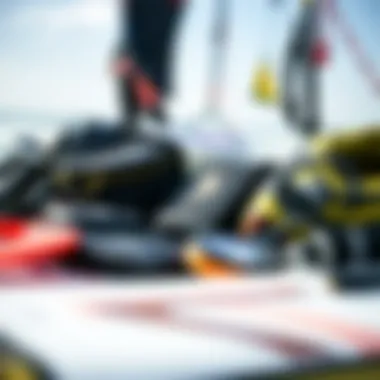
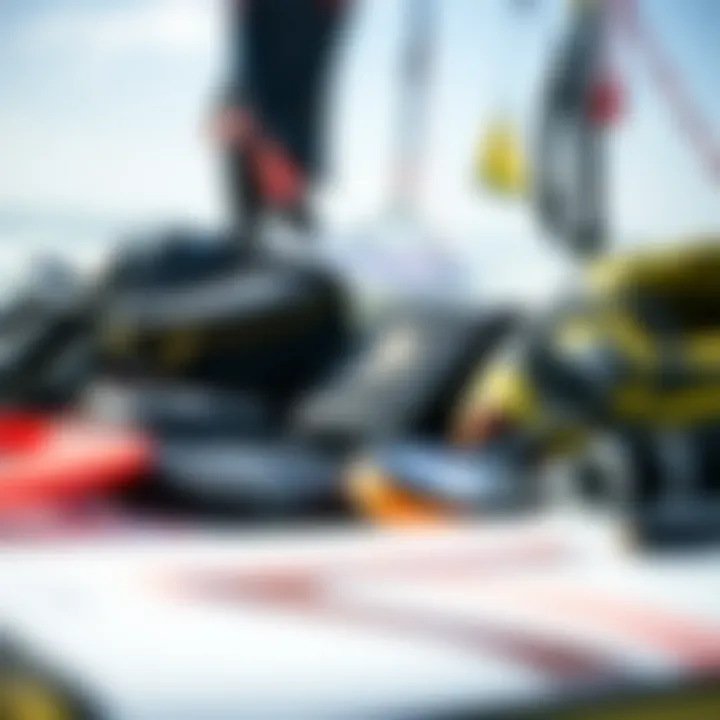
The standout feature of top-tier storage bags is their ergonomic design. They often include padded straps for comfort, which is an unseen benefit during long treks to the beach. However, those benefits come at a cost. You need to weigh the price against the value added to your overall kitesurfing experience.
New vs. Used Gear: Weighing Options
When it comes to kitesurfing, the discussion surrounding purchasing new versus used gear can make or break your entire experience in the sport. It’s vital to weigh your options carefully before setting out to splurge or pinch pennies. Making informed choices means understanding not just the financial implications, but also the quality, durability, and performance you can expect from either route.
Pros and Cons of New Gear
New gear often offers the most up-to-date technology and innovations. For instance, new kites are designed with improved material durability, flight stability, and overall performance, which can greatly enhance your riding experience. Having the latest gadgets could give you a slight edge, especially if you’re a performance-oriented rider. The warranty that you often receive with new gear provides peace of mind too, as it often guarantees replacements or repairs within a specific timeframe.
However, the downside is quite evident: the costs can be astronomical. A high-performance kite can run into the thousands, and that’s not even considering the board or safety equipment. In other words, your excitement might quickly turn to dread if the bill hits harder than expected.
Considerations for Used Equipment
When opting for used gear, you embark on a treasure hunt, but caution must be exercised. The benefits usually hinge on significant cost savings. You could potentially snag a high-quality kite at half the price if you know where to look. However, the potential pitfalls loom large.
Condition and Maintenance
One of the most crucial aspects of used gear is its condition. Kitesurfing equipment, particularly kites and boards, need to withstand a lot—from harsh UV rays to salt water. When looking at used gear, it's important to check for wear and tear. A surface scratch may seem trivial, but it can dramatically affect the kite’s integrity. You should also inquire about the maintenance it has undergone—has the previous owner kept up with repairs? Knowing this can prevent a nasty surprise in the middle of your next session.
In terms of maintenance history, pay attention to specific parts that may need replacing. For instance, old lines should be examined thoroughly. If they’re frayed or worn out, you might have to replace them sooner than you expect, potentially wiping out any savings you made on the original purchase. Make sure you evaluate the overall condition as a first layer of understanding before considering the costs. A well-maintained used kite could outlast a poorly constructed new one.
Where to Purchase
Deciding where to purchase your gear can be a revelatory experience. There’s no shortage of options, from local shops to online marketplaces. Local shops often have knowledgeable staff to guide you through the selection process. They might also offer demo sessions, giving you an idea of what you are getting into. On the flip side, secondhand markets like Craigslist or specialized forums can be a goldmine for deals.
However, purchasing from individuals often means buyer beware. If the seller has no reputation, you might end up with a lemon. Just like with condition, vet sellers carefully. Check reviews, ask around in forums like reddit.com/r/kitesurfing for feedback, or scour social media. Join kitesurfing groups on Facebook or follow trade sites where enthusiasts share their equipment.
In summary, whether you opt for new or used gear depends significantly on your budget, experience level, and personal preferences. Understanding the trade-offs in condition, maintenance, and purchase options empowers you to make a choice that aligns best with your kitesurfing journey.
Budgeting for Kitesurfing: Strategic Planning
When diving into the world of kitesurfing, establishing a budget is akin to mapping out your trajectory before hitting the water. It's vital for anyone, from rookies eagerly eyeing their first kite to seasoned veterans looking to upgrade their setup. Understanding how to navigate the costs involved and plan adequately can not only save you money but also ensure you invest in equipment that meets your needs.
Having a clear budget in place helps prioritize purchases. Each component plays a critical role in performance and safety, and knowing your financial limits allows you to strategically allocate your funds.
Calculating Total Costs
The first step in budgeting effectively for kitesurfing gear is to calculate total costs. This calculation includes several components:
- Kites: These can vary greatly in price, depending on their size, brand, and technology. Entry-level kites can start around $400, while premium kites can reach up to $1,500.
- Boards: The right board is crucial and may range from $300 to $1,200. The style of board you choose, whether it's twin-tip or directional, will also impact the cost.
- Harnesses: Harness prices start at about $100, but advanced models can easily hit $300, depending on features and comfort.
- Safety Gear: Investing here is non-negotiable. Expect to spend around $100 for helmets and $150 for impact vests, fully understanding this equipment's life-saving potential.
- Accessories: Don't forget the little things—lines, storage bags, and other necessary items often amount to an additional $100 to $300.
To sum it up, the full investment for a beginner might sit comfortably around $1,300 to $3,000, while experienced riders may find themselves spending anywhere from $2,500 to over $5,000 as they build more specialized equipment.
Finding the Best Deals
Finding great deals on kitesurfing gear requires a mix of patience and strategy. Here are some effective approaches to consider to maximize your budget:
- Shop During Off-Season: Prices tend to plummet outside of peak times. By shopping in the off-season, you can snag pieces at seriously discounted rates.
- Look for Package Deals: Some retailers offer bundled packages that include kites, boards, and safety gear at a reduced total price. Keep an eye out for these opportunities, as they can provide significant savings.
- Check Online Forums and Marketplaces: Websites and platforms like Reddit or Facebook Marketplace often feature second-hand gear, which can be an excellent option for those familiar enough to assess the condition of used items.
- Follow Brands and Shops on Social Media: Sometimes, brands will announce flash sales or exclusive discounts to their followers. Engaging with the kitesurfing community online can yield some hidden gems.
- Join Local Clubs: Being part of a club can give you access to gear swap events, partnerships with local shops, or discounts for members. It's an avenue worth exploring as it also connects you with like-minded individuals.
"Being informed is half the battle. Knowledge of equipment, seasonality, and market trends is your best ally in making wise investments."
Budgeting for kitesurfing is a meticulous yet rewarding process. Knowing exactly how to evaluate and plan your expenses can lead you to a more enjoyable experience without breaking the bank. As you refine your skills and passion for the sport grows, a well-planned budget will help support your journey.
The End: Navigating the Kitesurfing Gear Market
In the end, finding the right kitesurfing gear is not just about throwing money at the latest and greatest products. It requires a balanced approach, combining thorough research with a keen understanding of your personal needs and budget. As a kiteboarder, whether you’re just starting out or you’ve been gliding across the waves for years, knowing which equipment best suits your skill level is crucial. High-quality gear can make a huge difference in your performance and safety, which shouldn't be taken lightly.
When assessing your options, consider how often you'll be hitting the water. If you plan on kitesurfing every weekend, investing in well-made gear from reputable brands might save you money in the long run, as durable equipment often holds its value better. Conversely, for those who see the sport as a seasonal affair, exploring options in the used market can often yield great equipment without breaking the bank.
Additionally, keep in mind the importance of continual learning. The kitesurfing gear market is always evolving, with newer models arriving each season equipped with the latest technology. Staying informed about what works best for your style can empower you to make informed decisions that enhance your experience on the water.
Furthermore, there are various platforms where folks gather to share their experiences. Forums like reddit.com/r/kitesurfing or groups on facebook.com are treasure troves of information and can provide firsthand insights into products and seller reputations.
However, don't get too caught up in trends or peer pressure. What works for one kitesurfer may not work at all for another.
"The best kitesurfing gear is the gear that best fits you and your style."
In summary, navigating the kitesurfing gear market involves understanding your personal needs, doing your homework on quality vs. price, and tapping into the vast amount of community knowledge available. Ultimately, this strategic approach will not only help you save money but also ensure you enjoy your time out on the water to the fullest.















